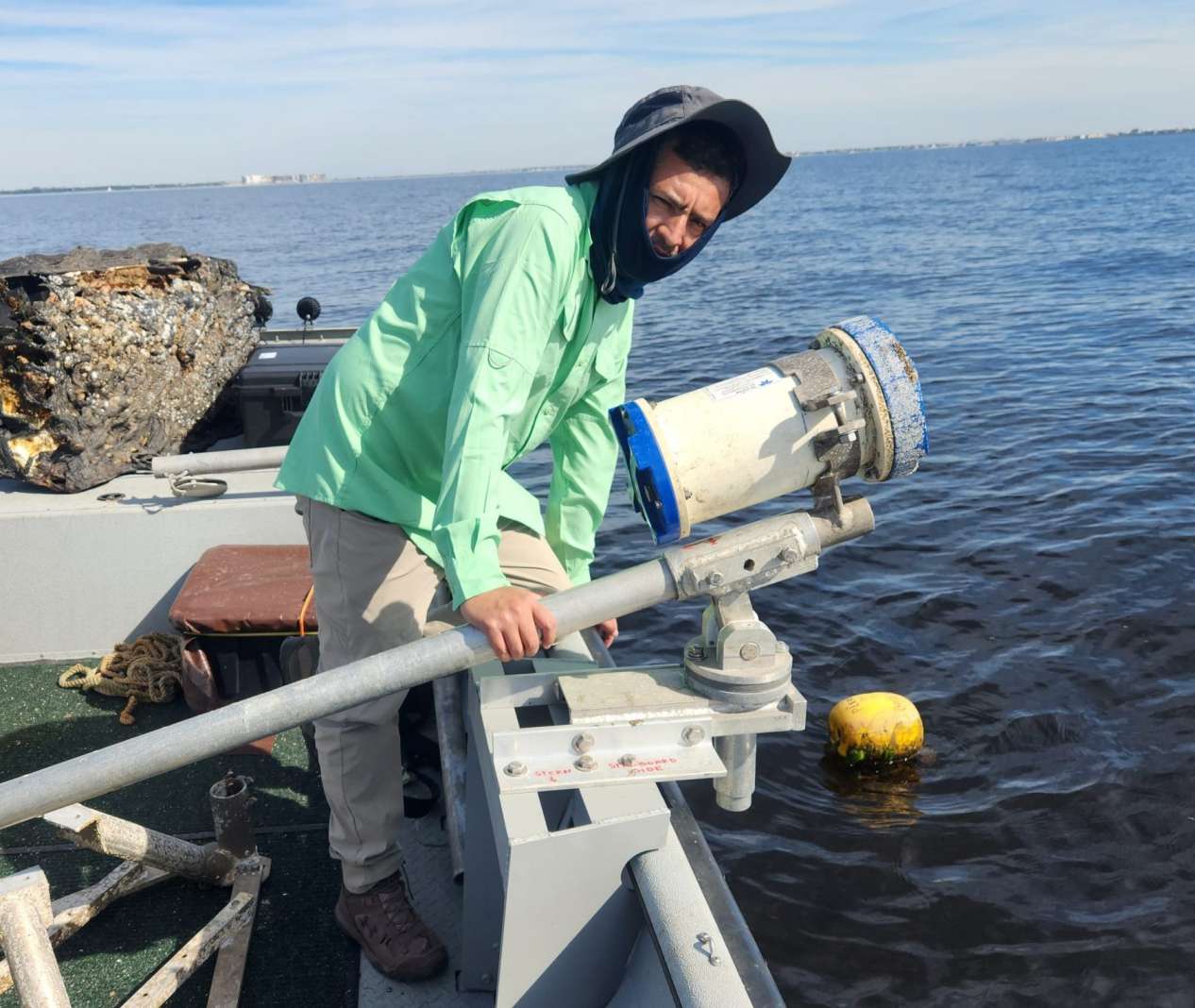The sun and moon can play a role in water quality challenges, new research shows. Arnoldo Valle-Levinson, Ph.D., CCS affiliate faculty and professor in the Department of Civil and Coastal Engineering, is studying how interactions among winds, tides and river discharges affect the Peace River’s water quality. His team has found that solar and lunar cycles, spanning from one month to several decades, influence these interactions, and ultimately the movement of water, the salt in the water and the nutrients.
“We’re trying to sort out those three agents — the influences from the wind, tides and river — that make the water move and ultimately determine the water quality of the system with measurements we’ve taken,” said Valle-Levinson. “This addresses the big question of what causes variations in water quality in the Peace River.”

A research team led by Valle-Levinson measured flow, salinity and dissolved oxygen from the upper Peace River to its connection to Charlotte Harbor using fixed instruments, which stay on the river floor, every ten minutes from October 2022 through June 2023, and towed instruments twice during wet and dry seasons from November 2022 until November 2023 for greater geographical coverage. The river and estuary, which are both important sources of water for the region, have been affected by excessive nutrients, a key culprit behind low oxygen ‘dead zones’, algal blooms and fish die-offs.
“The main cause of the water quality problem is the excessive nutrients that come from the Peace River,” said Valle-Levinson. “But we’re finding out that’s not necessarily the only agent.”
The impact of currents and tides on surrounding areas, whether it is a dry or wet season, and the time of month can further contribute to differences in the water quality indicators of flow, salinity and dissolved oxygen.
During dry seasons, marked by less humidity and rainfall, saltwater stays in the river longer and can intrude into the river and contaminate freshwater resources. Valle-Levinson’s team has found the moon’s orbits and solar activity may influence saltwater intrusions.

At scales shorter than one month, winds, particularly from hurricanes, can alter how water from the Peace River moves into the estuary or toward the ocean. Furthermore, water flow differs in the relatively shallow areas of the river compared to the relatively deep parts, which affects how water quality changes throughout the river.
The alignment of the sun, moon and earth each month impacts how fresh and saltwater mix. During spring tides, when the sun, moon and earth are aligned, the moon’s gravitational pull is at its highest and causes strongest mixing. This results in a horizontal separation of the flows by which salty water enters the estuary in the deepest channel, and brackish water flows seaward over shoals.

During neap tides, seven days after a spring tide, the salty water slides underneath the freshwater rather than being horizontally separated. This is often during half-moons. These variations are important for resource managers to consider as the appearance of salty water along the bottom changes daily.
“That has implications for the ecology and the water quality of the system because the fresh water and salty water likely affect organisms that are on the bottom of the river differently, so the organisms have to be able to adapt to varied levels of salinity,” said Valle-Levinson.
Valle-Levinson will next analyze the data collected by the field team along with 11 years of data from the Peace River Manasota Regional Water Supply Authority to publish his findings. This work is sponsored by the Florida Department of Environmental Protection.
—
By Megan Sam
